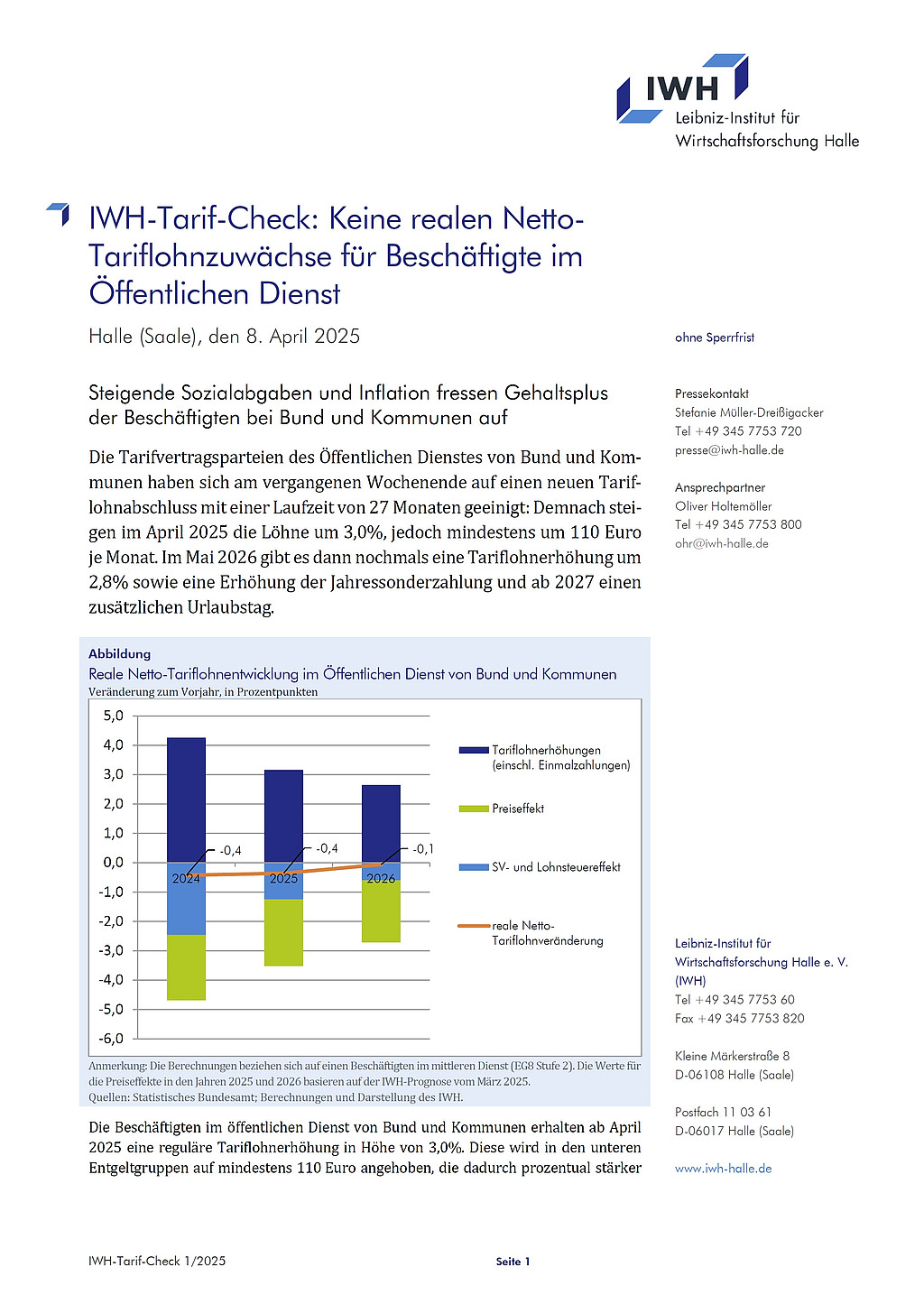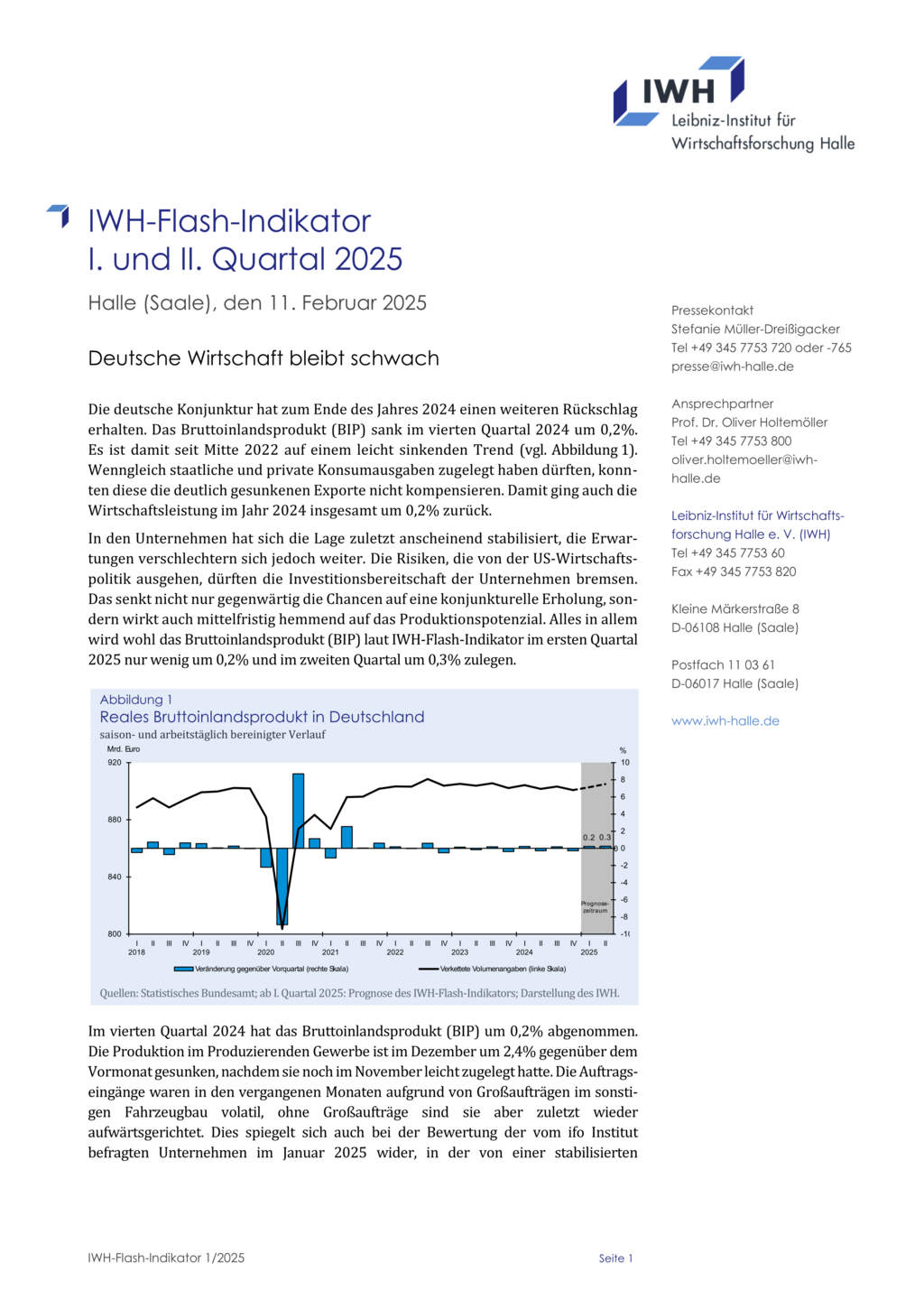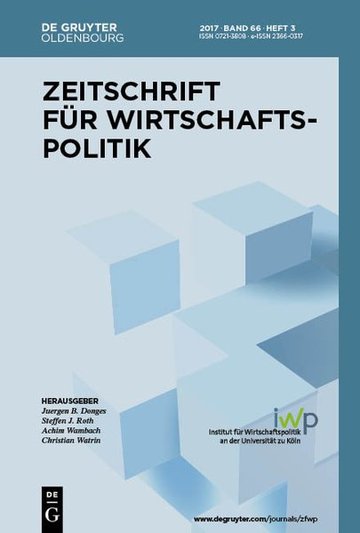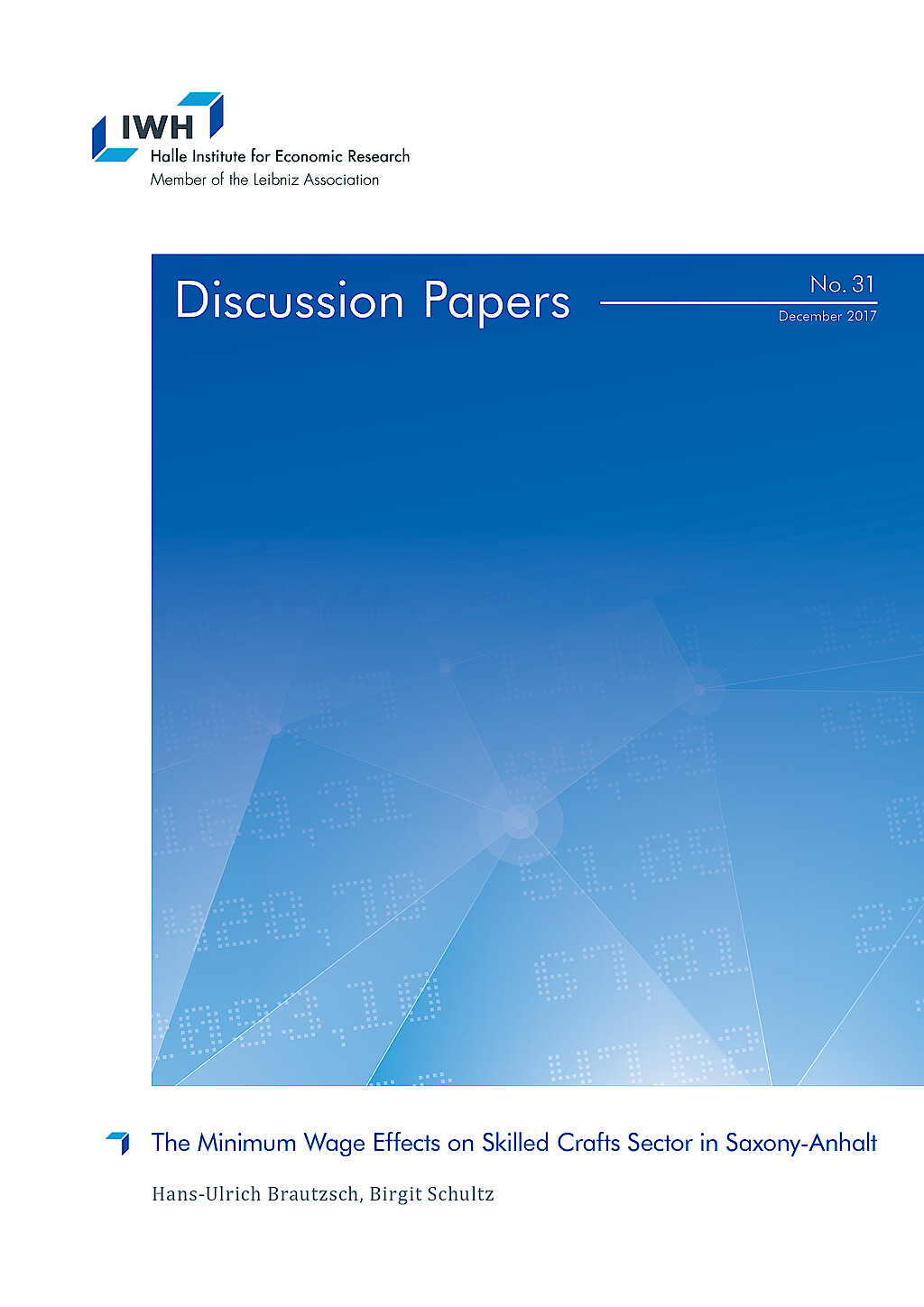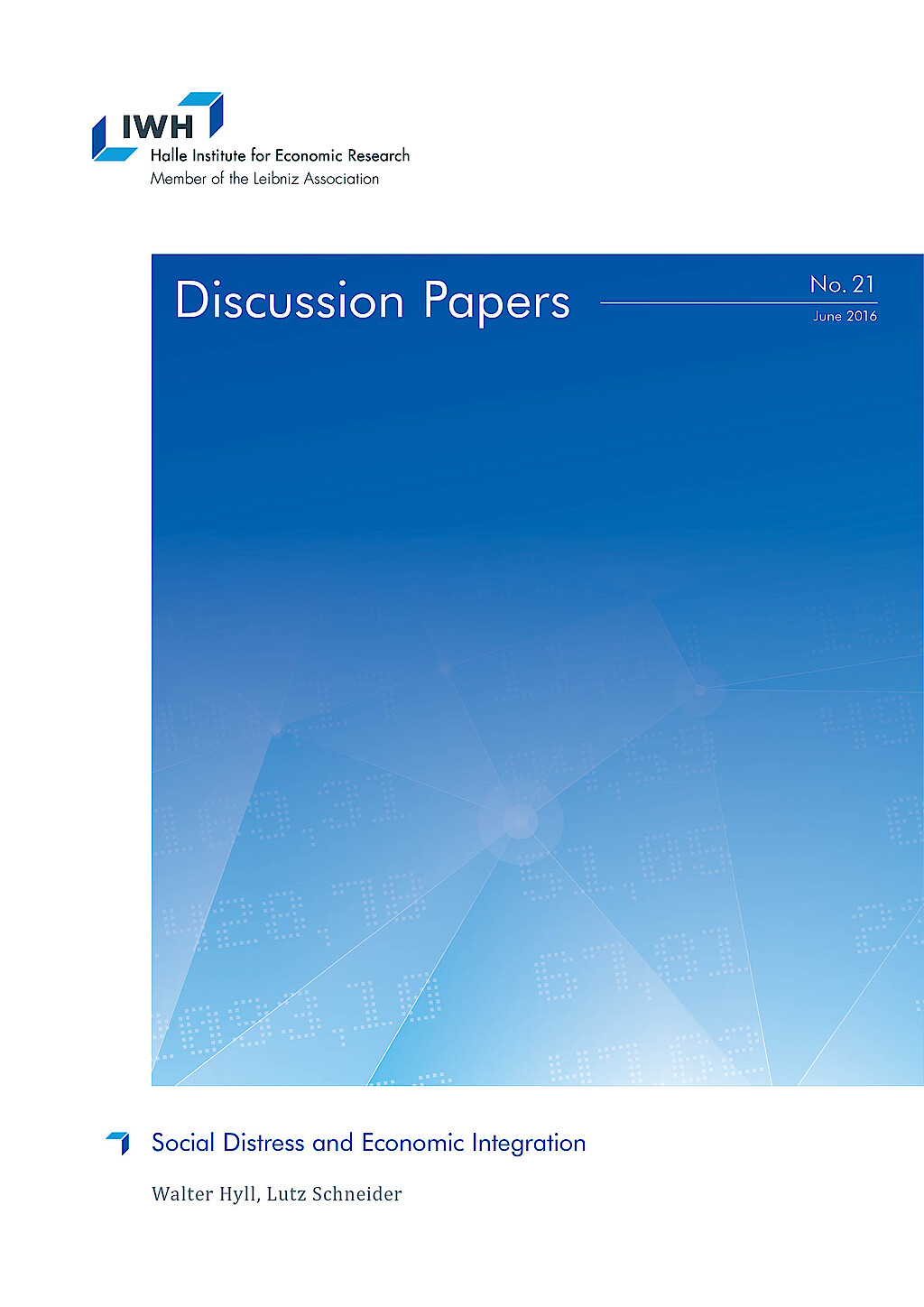Birgit Schultz

Current Position
since 1/95
Economist in the Department of Macroeconomics
Halle Institute for Economic Research (IWH) – Member of the Leibniz Association
Research Interests
- analysing and forecasting of wages, income, private consumption and prices (consumer prices and GDP deflator) in Germany
- German Sector accounts
- export orientation of companies and wage compensation
- methods of micro-econometric evaluation, especially matching approaches
- organisation of workshops, seminars and conferences
Birgit Schultz joined the institute in 1995 and the Department of Macroeconomics in 2007. Her research focuses on the diagnosis and prediction of wages and salaries, income and the private consumption in Germany and East Germany as well as the price forecast.
Birgit Schultz earned a diploma from Martin Luther University Halle-Wittenberg and Manchester Metropolitan University.



